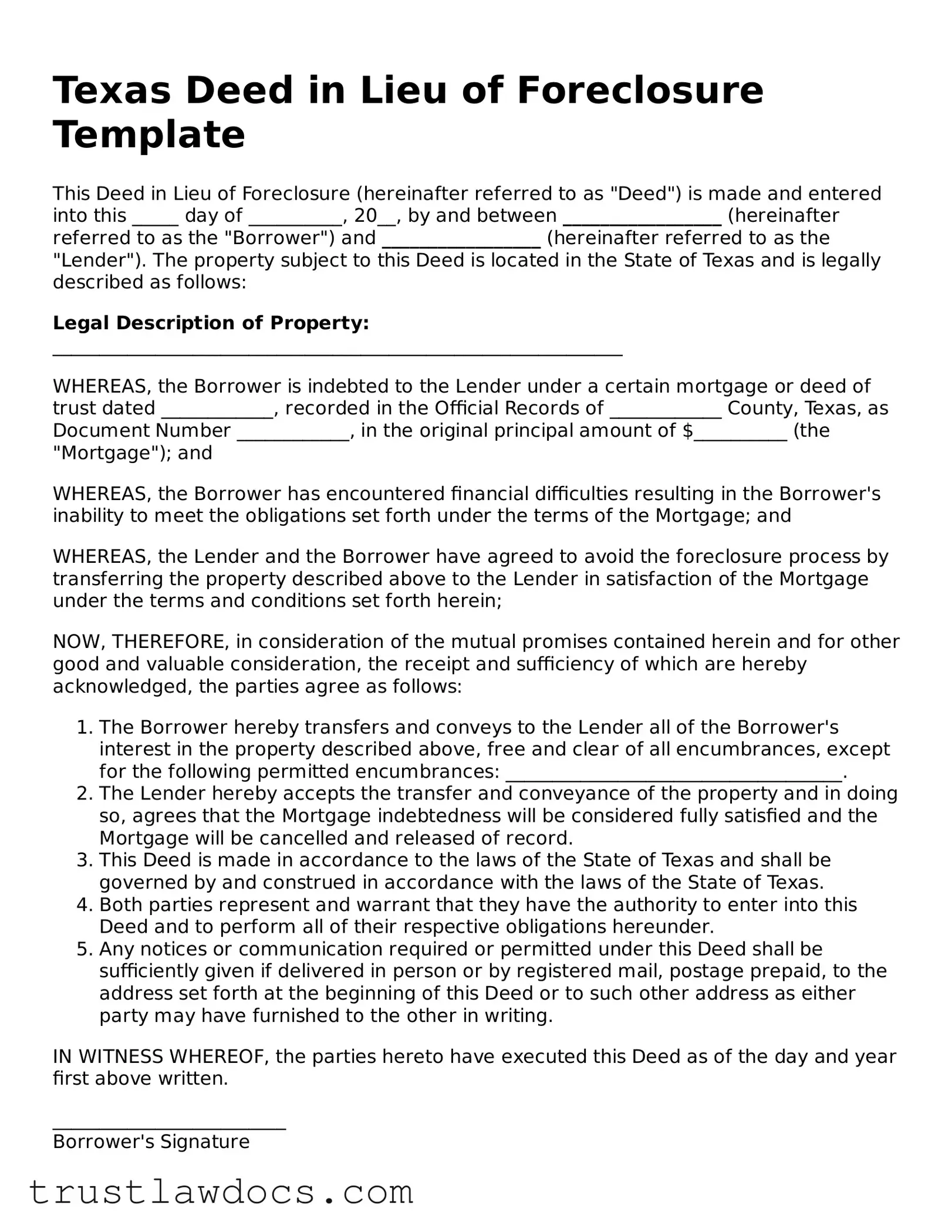Texas Deed in Lieu of Foreclosure Template
This Deed in Lieu of Foreclosure (hereinafter referred to as "Deed") is made and entered into this _____ day of __________, 20__, by and between _________________ (hereinafter referred to as the "Borrower") and _________________ (hereinafter referred to as the "Lender"). The property subject to this Deed is located in the State of Texas and is legally described as follows:
Legal Description of Property: _____________________________________________________________
WHEREAS, the Borrower is indebted to the Lender under a certain mortgage or deed of trust dated ____________, recorded in the Official Records of ____________ County, Texas, as Document Number ____________, in the original principal amount of $__________ (the "Mortgage"); and
WHEREAS, the Borrower has encountered financial difficulties resulting in the Borrower's inability to meet the obligations set forth under the terms of the Mortgage; and
WHEREAS, the Lender and the Borrower have agreed to avoid the foreclosure process by transferring the property described above to the Lender in satisfaction of the Mortgage under the terms and conditions set forth herein;
NOW, THEREFORE, in consideration of the mutual promises contained herein and for other good and valuable consideration, the receipt and sufficiency of which are hereby acknowledged, the parties agree as follows:
- The Borrower hereby transfers and conveys to the Lender all of the Borrower's interest in the property described above, free and clear of all encumbrances, except for the following permitted encumbrances: ____________________________________.
- The Lender hereby accepts the transfer and conveyance of the property and in doing so, agrees that the Mortgage indebtedness will be considered fully satisfied and the Mortgage will be cancelled and released of record.
- This Deed is made in accordance to the laws of the State of Texas and shall be governed by and construed in accordance with the laws of the State of Texas.
- Both parties represent and warrant that they have the authority to enter into this Deed and to perform all of their respective obligations hereunder.
- Any notices or communication required or permitted under this Deed shall be sufficiently given if delivered in person or by registered mail, postage prepaid, to the address set forth at the beginning of this Deed or to such other address as either party may have furnished to the other in writing.
IN WITNESS WHEREOF, the parties hereto have executed this Deed as of the day and year first above written.
_________________________
Borrower's Signature
_________________________
Borrower's Printed Name
_________________________
Lender's Signature
_________________________
Lender's Printed Name
State of Texas
County of ____________
On this _____ day of ____________, 20__, before me, a notary public, personally appeared ____________________, known to me to be the person whose name is subscribed to the within instrument, and acknowledged that he/she executed the same for the purposes therein contained.
In witness whereof, I hereunto set my hand and official seal.
_________________________
Notary Public
My Commission Expires: ____________
